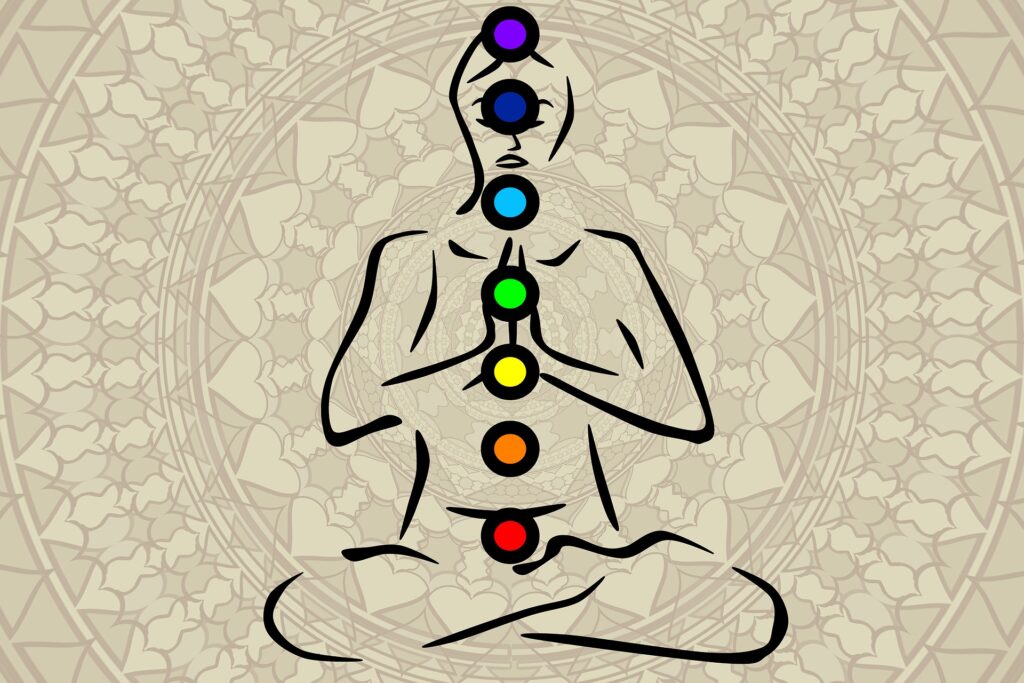
Anāhata the heart chakra is located in the center of the chest, halfway between the lower 3 chakras and the upper 3 chakras.
It is the fourth of the seven main chakras, and the point of balance between the body and the soul, between the material and the spiritual.
Depiction of Anāhata
The Hindu tradition represents Anāhata by a blue or green lotus with 12 petals, with in its center, a yantra formed of two intertwined triangles: the triangle points upwards which represents the male principle Shiva, and the triangle points downwards which represents the female Shakti principle.

Center of Love and Sensibility
This chakra, capable of releasing a benevolent energy of healing love, both towards oneself and towards others, is the source of the positive feelings of compassion, patience, peace, happiness and joy.
It is through the heart chakra that we connect with others, so it is the center of our relationships with others.

Seat of consciousness and creativity
The 4th chakra is the seat of the “I” and the ego, but also of the divine self (Atma), and of self-awareness in relation to others.
It is the most important energy center of the body. It integrates the emotions produced by the first three chakras and manages the more stable feelings integrated in the upper three chakras.
Anāhata is the junction point between telluric and celestial energies. This chakra is an integral part of the processes of transformation and regeneration. It activates the power of the imagination and therefore the ability to create.

Connections for Anāhata
The organs associated with Anāhata are the heart, lungs, hands and skin. Its element is air, which represents freedom, lightness, voluptuousness and infinity. His sense of touch, his animal the black antelope. Its mantra is Yam and its note is Fa.
How to Activate the Heart Chakra
When Anāhata is closed, we are selfish, cold, demanding. When it is overly open, we are overly expansive, or possessive, overwhelmed with desire, jealousy, sadness, and dependent in our relationships with others.
When Anāhata is well balanced, we are kind to others, and forgive easily. We feel understanding for all that is. We accept our true nature. It is an essential prerequisite to flourish and evolve in a positive way.
To activate Anāhata, you can for example:
- Surround yourself with green and/or pink
- spend as much time outdoors as possible
- pay more attention to your breathing
- let go of your problems
- practice selfless giving to loved ones or complete strangers
- Meditate by focusing on your heart chakra
- chant the mantra Yam, out loud or in your head
- The 4th chakra is activated by physical contact and hugs, whether with people or animals.
- The incense and essential oils recommended for opening Anāhata are: lemon verbena, basil, peppermint, ylang ylang, rose, neroli, bergamot, geranium, lemon balm, eucalyptus radiata…
- Pink or green colored stones are also effective: aventurine, amazonite, agate, jade, pink quartz.
- In yoga, the postures of the cobra, the fish and the camel open the rib cage and are excellent for activating Anāhata.













































